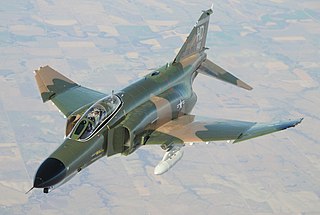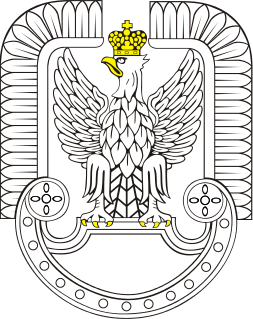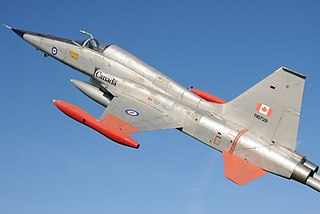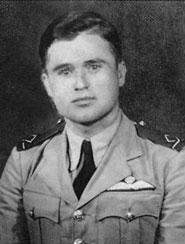
The McDonnell Douglas F-4 Phantom II is an American tandem two-seat, twin-engine, all-weather, long-range supersonic jet interceptor and fighter-bomber originally developed by McDonnell Aircraft for the United States Navy. Proving highly adaptable, it first entered service with the Navy in 1961 before it was adopted by the United States Marine Corps and the United States Air Force, and by the mid-1960s it had become a major part of their air arms. Phantom production ran from 1958 to 1981 with a total of 5,195 aircraft built, making it the most produced American supersonic military aircraft in history, and cementing its position as an iconic combat aircraft of the Cold War.

The Hellenic Air Force is the air force of Greece. It is considered to be one of the largest air forces in NATO and is globally placed 18th out of 139 countries. It is also noted for its high quality pilots, benchmarked annually in international exercises. Under the Kingdom of Greece from 1935 to 1973, it was known as the Royal Hellenic Air Force (RHAF).

The Dassault Mirage 2000 is a French multirole, single-engine, fourth-generation jet fighter manufactured by Dassault Aviation. It was designed in the late 1970s as a lightweight fighter to replace the Mirage III for the French Air Force. The Mirage 2000 evolved into a multirole aircraft with several variants developed, with sales to a number of nations. It was later developed into the Mirage 2000N and 2000D strike variants, the improved Mirage 2000-5, and several export variants. Over 600 aircraft were built and it has been in service with nine nations.

The Polish Air Force is the aerial warfare branch of the Polish Armed Forces. Until July 2004 it was officially known as Wojska Lotnicze i Obrony Powietrznej. In 2014 it consisted of roughly 16,425 military personnel and about 475 aircraft, distributed among ten bases throughout Poland.

Tactical Air Command (TAC) is an inactive United States Air Force organization. It was a Major Command of the United States Air Force, established on 21 March 1946 and headquartered at Langley Air Force Base, Virginia. It was inactivated on 1 June 1992 and its personnel and equipment absorbed by Air Combat Command (ACC).

The Turkish Air Force is the aerial warfare service branch of the Turkish Armed Forces. The Turkish Air Force can trace its origins back to June 1911 when it was founded by the Ottoman Empire, however, the air force as it is known today did not come into existence until 1923 with the creation of the Republic of Turkey. It is considered to be the third largest airforce in NATO.
The article provides an overview of the entire chain of command and organization of the Hellenic Air Force as of 2018 and includes all currently active units. The Hellenic Air Force is commanded by the Chief of the Air Force General Staff in Athens.

The Belgian Air Component is the air arm of the Belgian Armed Forces, and until January 2002 it was officially known as the Belgian Air Force. The Belgian military aviation was founded in 1909 and is one of the world's oldest air services.

The Canadair CF-5 is the Canadair licensed-built version of the American Northrop F-5 Freedom Fighter aircraft primarily for the Canadian Forces and the Royal Netherlands Air Force. The CF-5 was upgraded periodically throughout its service career in Canada. The Canadian Forces retired the type in 1995, although CF-5s continue to be used by other countries.

The Bulgarian Air Force is one of the three branches of the Military of Bulgaria, the other two being the Bulgarian Navy and Bulgarian land forces. Its mission is to guard and protect the sovereignty of Bulgarian airspace, and jointly with the other branches, to protect territorial integrity. The Bulgarian Air Force is one of the oldest air forces in Europe and the world. In recent times it has been actively taking part in numerous NATO missions and exercises in Europe.

The Hellenic Air Force Academy is a military academy responsible for supplying the Hellenic Air Force with military pilots, aeronautical engineers, air traffic and air defence controllers. The first Greek institution for aviation training was founded in 1919 as the Military Academy of Aviation in Thessaloniki. In 1931 the Air Force School was founded in Tatoi, Athens. In 1967 it took the unofficial name Icarus School in reference to the figure of Icarus from ancient Greek mythology. The figure of Icarus forms the centrepiece of the academy's badge.

The 162d Attack Squadron is a unit of the Ohio Air National Guard 178th Wing located at Springfield Air National Guard Base, Springfield, Ohio. The 162d is equipped with the General Atomics MQ-9 Reaper UAV.

The 113th Air Support Operations Squadron is a unit of the Indiana Air National Guard 181st Intelligence Wing located at Terre Haute Air National Guard Base, Indiana.

Marinos Mitralexis was a Hellenic Air Force pilot during World War II. He became a legend when he managed to bring down an enemy bomber by ramming its tail, on 2 November 1940.
The Naval Air Service was the air arm of the Hellenic Navy from 1915 to 1930.

A squadron in air force, army aviation, or naval aviation is a unit comprising a number of military aircraft and their aircrews, usually of the same type, typically with 12 to 24 aircraft, sometimes divided into three or four flights, depending on aircraft type and air force. Land based squadrons equipped with heavier type aircraft such as long-range bombers, cargo aircraft, or air refueling tankers have around 12 aircraft as a typical authorization, while most land-based fighter equipped units have an authorized number of 18 to 24 aircraft.

Operation Unified Protector was a NATO operation in 2011 enforcing United Nations Security Council resolutions 1970 and 1973 concerning the Libyan Civil War and adopted on 26 February and 17 March 2011, respectively. These resolutions imposed sanctions on key members of the Gaddafi government and authorized NATO to implement an arms embargo, a no-fly zone and to use all means necessary, short of foreign occupation, to protect Libyan civilians and civilian populated areas.

On 26 January 2015, an F-16 jet fighter of the Hellenic Air Force crashed into the flight line at Los Llanos Air Base in Albacete, Spain, killing 11 people: the two crew members and nine on the ground. Twenty-one others, all on the ground, were also injured.

















